
The third largest city in Serbia, Niš has been serving as a cultural and geographical bridge between Central Europe and the Middle East for more than two millennia. As the birthplace of Constantine the Great, the Roman Emperor who introduced Christianity to the ancient superpower, the city played a major historic role. Being an imperial crossroad, Niš is abundant with countless historical sites left by the Romans, Bulgarians, Ottomans and other ancient empires. Its rich past, mundane present as well as a brilliant culinary scene, all coalesce into a fascinating melting pot that shouldn’t be missed.
Gritty and graceful at the same time, Niš is a hodgepodge of formidable ancient sites alongside nondescript communist style housing. Named after the Nišava River that bisects its center and is deemed as a local emblem, the city offers far more than just the relics of its glorious past.
Countless traditional eateries, superb restaurants and fashionable cafés are within reach everywhere you go. Whereas the center of Niš is relatively small, its more recently built parts are abundant with spacious parks, semi-wild fields and modern style Orthodox churches, contrasted by the surrounding unlofty architecture.
Named after Post-Ottoman Serbia’s first king, Milan Square is the heart of modern-day Niš. Historically, it was one of the first urban development projects outside the city’s fortress, serving as a hectic marketplace for centuries. Following the Ottomans’ defeat and withdrawal from Serbia, the square was redesigned as a European style plaza, embellished by a lawn and a fountain.
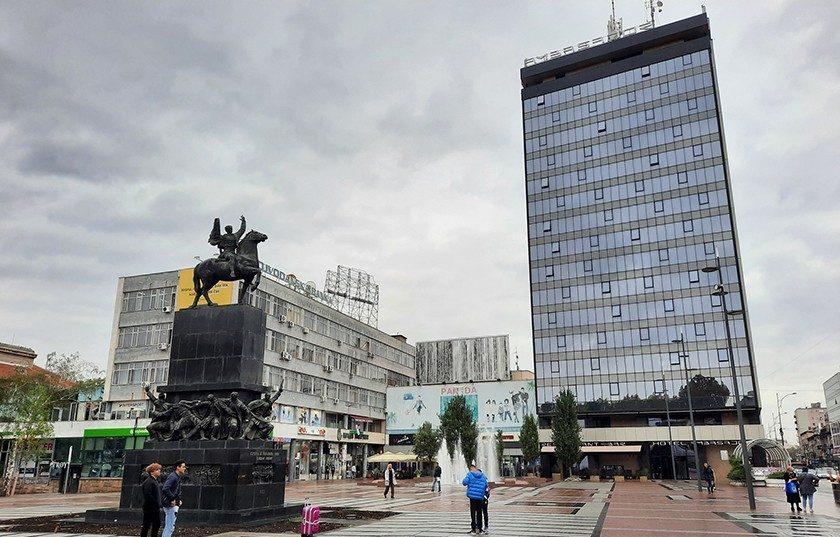
photography by: Omri Westmark
The square’s most dominant feature is undoubtedly the Monument to the Liberators of Niš, commemorating Serbia’s long and costly strive for independence. Created by the Croat sculptor Anton Augustinčić in 1937, the black marble memorial is topped by a horseman who proudly waves the victory flag, representing the precious freedom that was gained by the people of Niš and the entire Serbian nation.
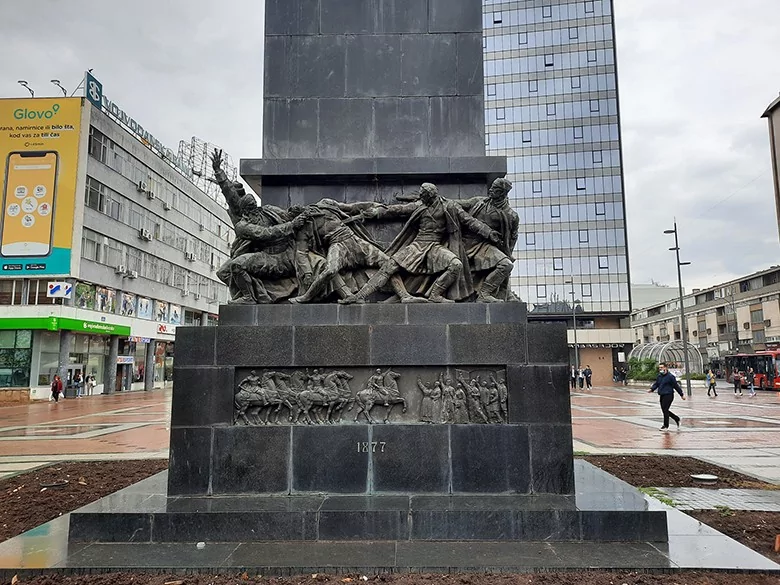
photography by: Omri Westmark
Flowing through the heart of the city that is named after it, the Nišava River starts its way in Bulgaria before reaching southern Serbia. It’s difficult to overstate its historic significance to the city of Niš, which was built and expanded along its route. Nowadays, a charming riverfront esplanade welcomes both locals and foreigners, who drink and socialize along its banks, more so than in any other public space throughout the city.

photography by: Omri Westmark
While architecturally, the city of Niš alternates between Soviet style housing and uninspiring modern blocks, there are also numerous buildings with ornamented façades, inspired by central-European architecture. Alternatively, some characterless buildings got beautified by installation of street-art and sculptures as part of urban renewal projects.

photography by: Omri Westmark
Designed by an anonymous architect from Vienna, this lavish edifice houses the main offices of the University of Niš, alongside a Christian-style gazebo. Prior to its current role as the seat of the university, the 19th century building served as a courthouse, military headquarters and during WW1, when Niš was the capital city, as the seat of the Serbian government.
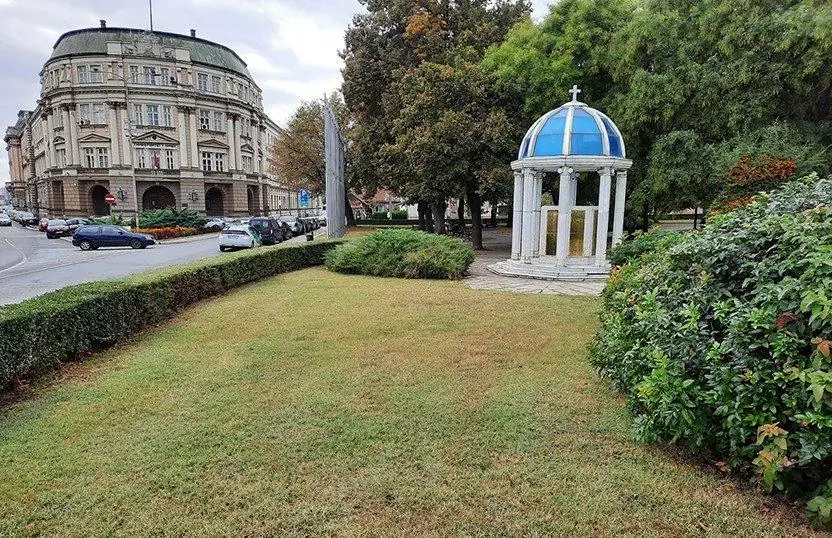
photography by: Omri Westmark
Surrounded by St. Sava Park, one of the city’s most popular recreational spaces, the Temple of the Holy Emperor Constantine and Empress Helena was built in 2002. Formally, the Byzantine-style church was erected as part of the 1,700th anniversary for the approval of the Edict of Milan, a decree that granted a freedom of religion for Christian worshipers during the Roman era. Surprisingly, as of 2021, the church has not been completed yet, as couple of frescos are still being painted on its interior walls.
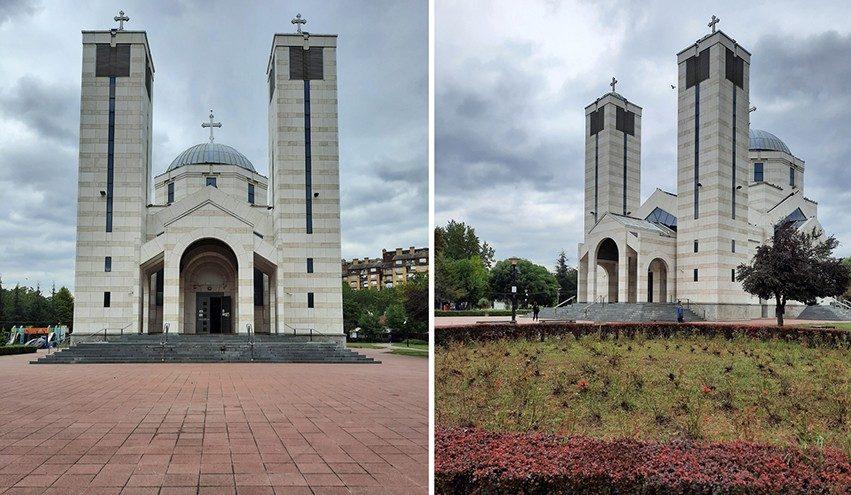
photography by: Omri Westmark
Much of Niš center is dominated by colossal communist style buildings that might be regarded by most of us as an eye sore. Nevertheless, the greyish concrete monoliths along Bulevar Dr Zorana Đinđića are fully incorporated into the urban tissue, generating lively and vibrant street scenery that simply can’t be underestimated.
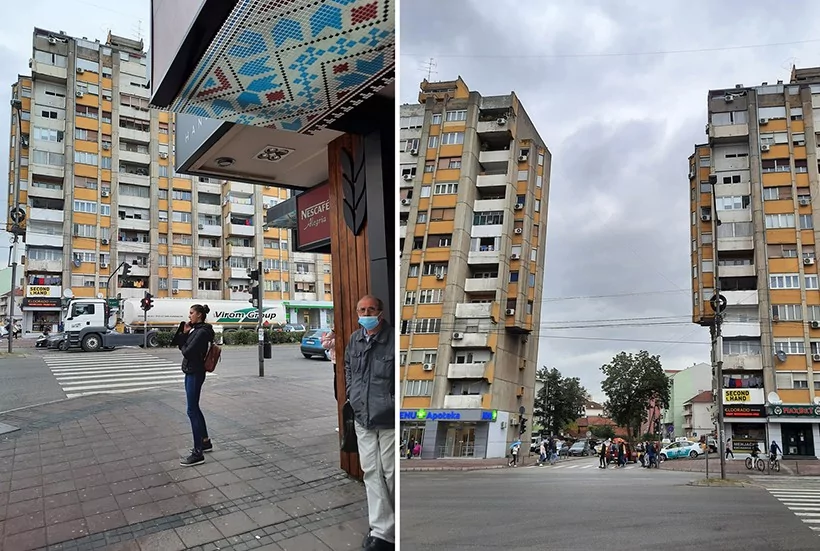
photography by: Omri Westmark
Among the many businesses across the wide boulevard are typical Serbian eateries that serve the traditional “Lepinja” flatbread, stuffed with a plethora of barbecued meat, locally known as ćevapi.

photography by: Omri Westmark
The boulevard’s spacious sidewalk on the backdrop of the city’s gritty skyline.
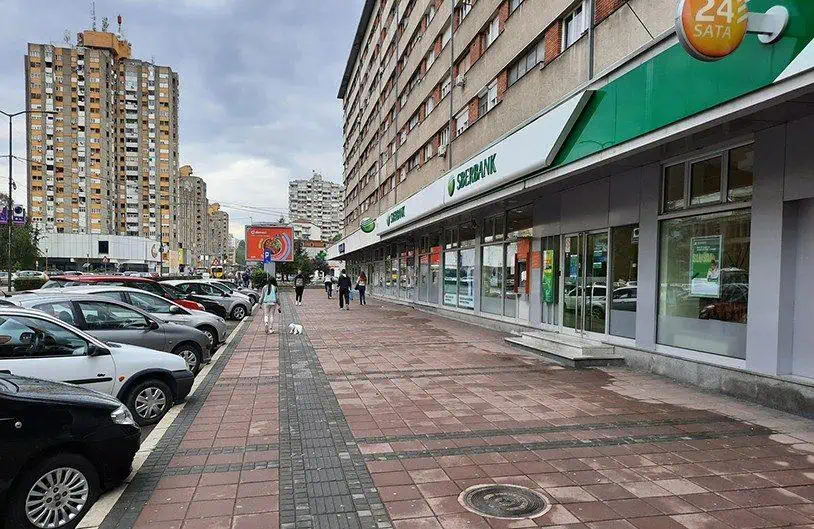
photography by: Omri Westmark
Just one kilometer eastwards from the intimidating architecture, lies the Gabrovačka River, featuring rural style houses along its grassy banks. This sheer contrast between the different parts of the city, all within a walkable distance, is what makes Niš a truly interesting place to explore.
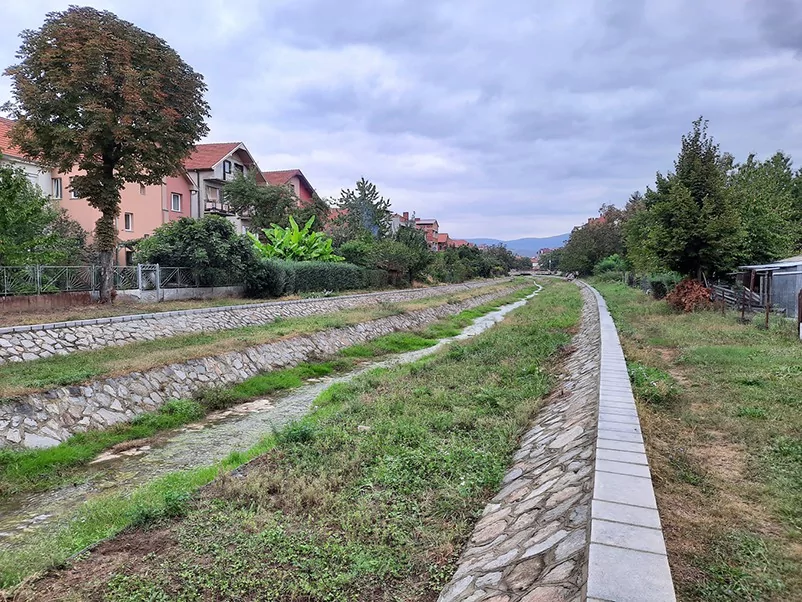
photography by: Omri Westmark
A nearby pile of lumber, aimed for heating during wintertime, further demonstrates the countryside vibes this part of Niš has.
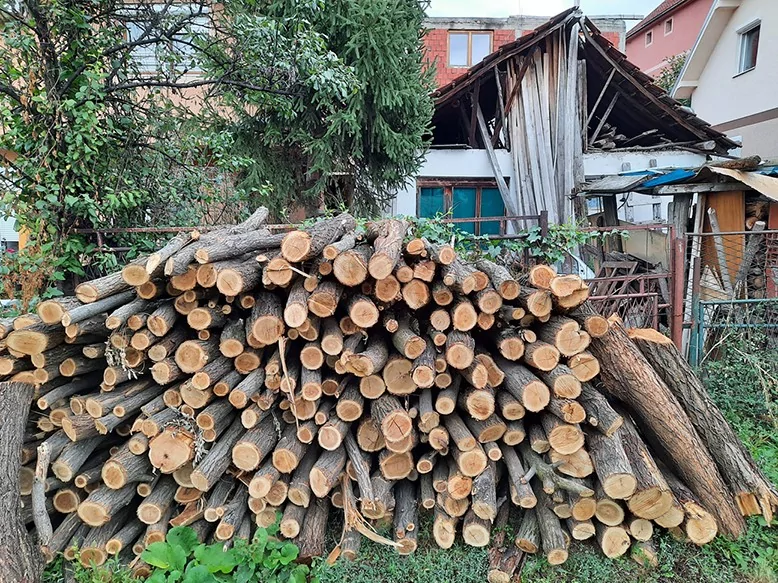
photography by: Omri Westmark
A cluster of massive communist style buildings between Bulevar Nemanjića and Gabrovačka River. Most of those residential complexes might seem quite dreadful at first glance, nonetheless, they tend to have a far smaller footprint than one might assume, leaving large space for lawn, garden and sometimes even a partly wild grove.

photography by: Omri Westmark
Niš is well renowned across Serbia and beyond for having a superb culinary scene. Home to many small and authentic bistros, the city’s cuisine is a prime example for typical hearty Balkan food, including traditional barbecue, peppers and lot of Rakija.
Alongside the scrumptious street food are several upscale restaurants that offer insanely brilliant eats for just a fraction of what it would cost in the western part of the continent.
Located in a newly renovated house, Stambolijski Restaurant is undoubtedly one of the city’s best dining options, specializing on southern Serbian cuisine with plenty of modern twists.
A typical platter of regional appetizers. On the left side is Ajvar, a semi sweet pepper paste with extremely smooth texture branded as one of Serbia’s national dishes. The platter itself consists of Duvan čvarci, a unique type of pork rinds that feature a hair-like fiber texture, locally cured pork sausage and Kajmak, the local version of clotted cream, made of slowly cooked milk, known for being incredibly fatty.

photography by: Omri Westmark
A Pork steak drizzled with honey sauce and complemented with potato wedges, elegantly fuses both Serbian and international cuisines.

photography by: Omri Westmark
In spite of its seemingly heavy appearance, this desert is pretty light, made of delicate mascarpone cheese, almonds and freshly picked blueberries.
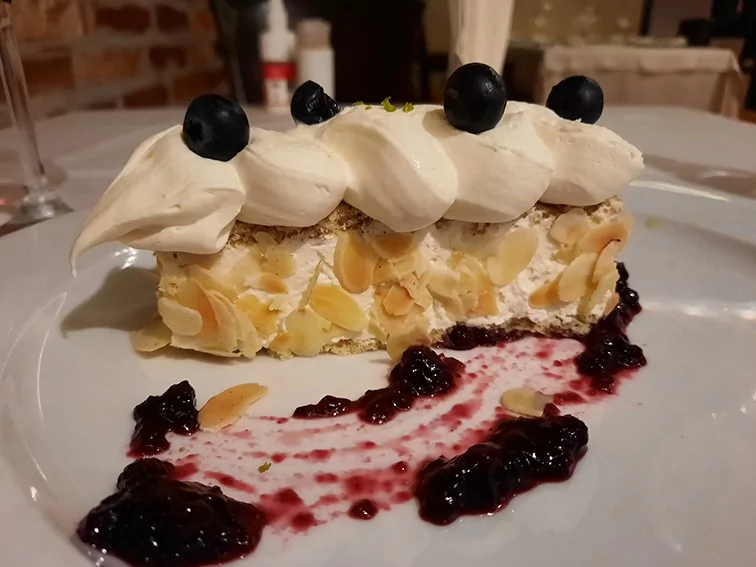
photography by: Omri Westmark
There is no better example of the city’s seamless link to its past than its well-preserved glorious fortress. Functioning as sort of a time-machine, the current 18th century fortress was constructed by the Ottomans on the foundations of former Roman and Byzantine citadels, taking advantage of its strategic importance.
While in modern times the city center has migrated elsewhere, the fort remains a prominent part of Niš, home to the city’s weather station, a venue of the Niš Film Festival and a popular green space among locals.
The fortress has four gates, the Vidin Gate, the Belgrade Gate, the Large Gate and the Stambol Gate, the latter of which (photographed below) is the main gate, providing access for passersby who make their way from the city center.
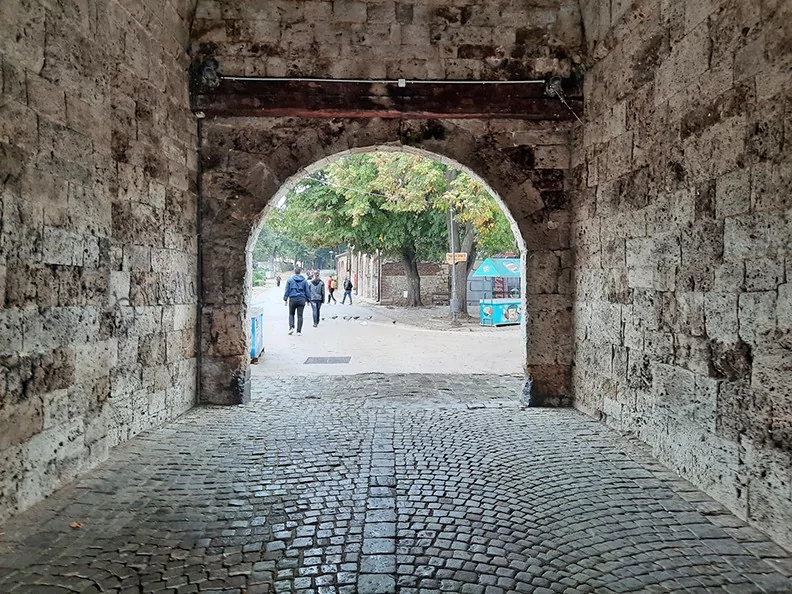
photography by: Omri Westmark
Given its current recreational nature, the fort houses several cafés that offer visitors a sip of Serbian style coffee on the backdrop of its stone ramparts, as well as a souvenir shop selling traditional handicrafts and knick-knacks.
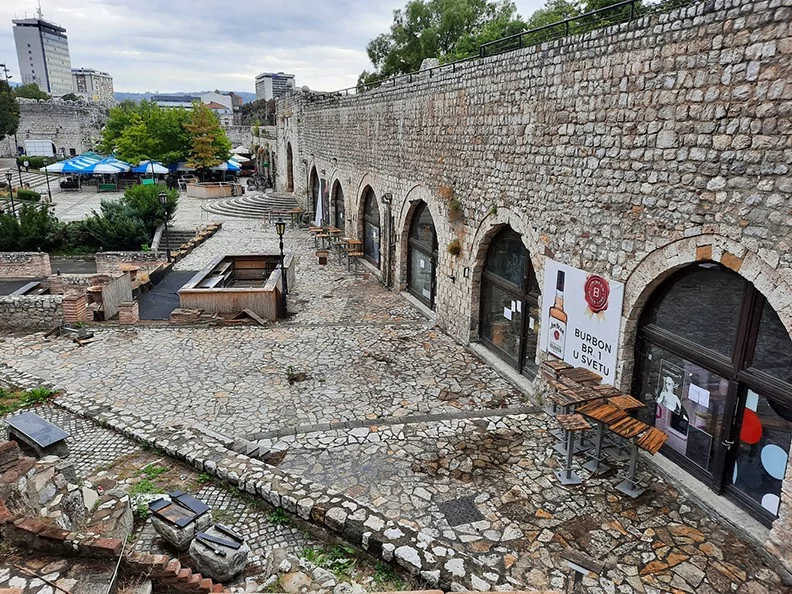
photography by: Omri Westmark
While an unsuspecting foreigner will most likely mistake it with ancient ruins, this bullet shaped memorial was actually erected in 1902. Known as Prince Milan’s monument, it commemorates the liberation of Niš from the rule of the Ottomans.
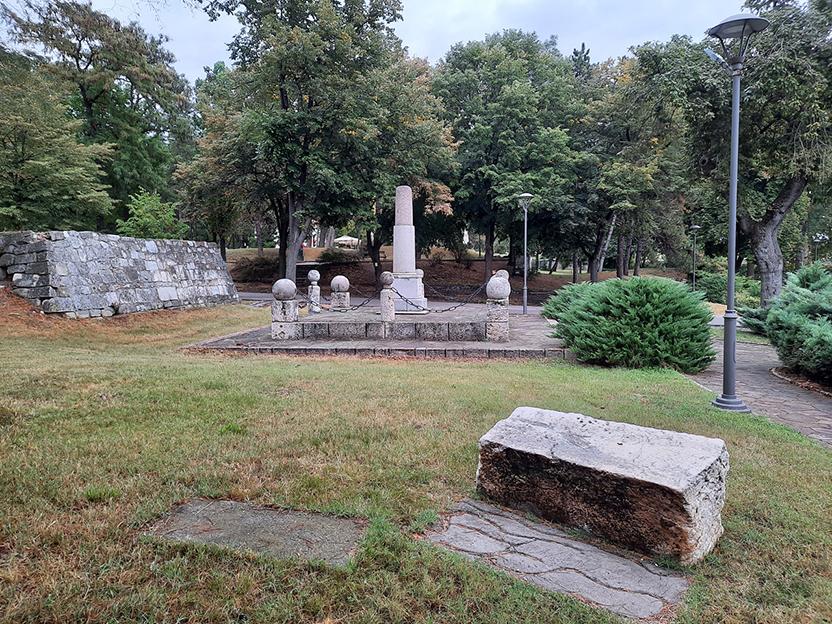
photography by: Omri Westmark
As previously mentioned, the fortress serves a venue for several festivals, all of which take place at the amphitheater, reinforced with modern-day plastic chairs. Besides the Niš Film Festival, the fortress also hosts the Choir, Nisville and Nisomnia festivals as well as live concerts of prominent Serbian musicians.
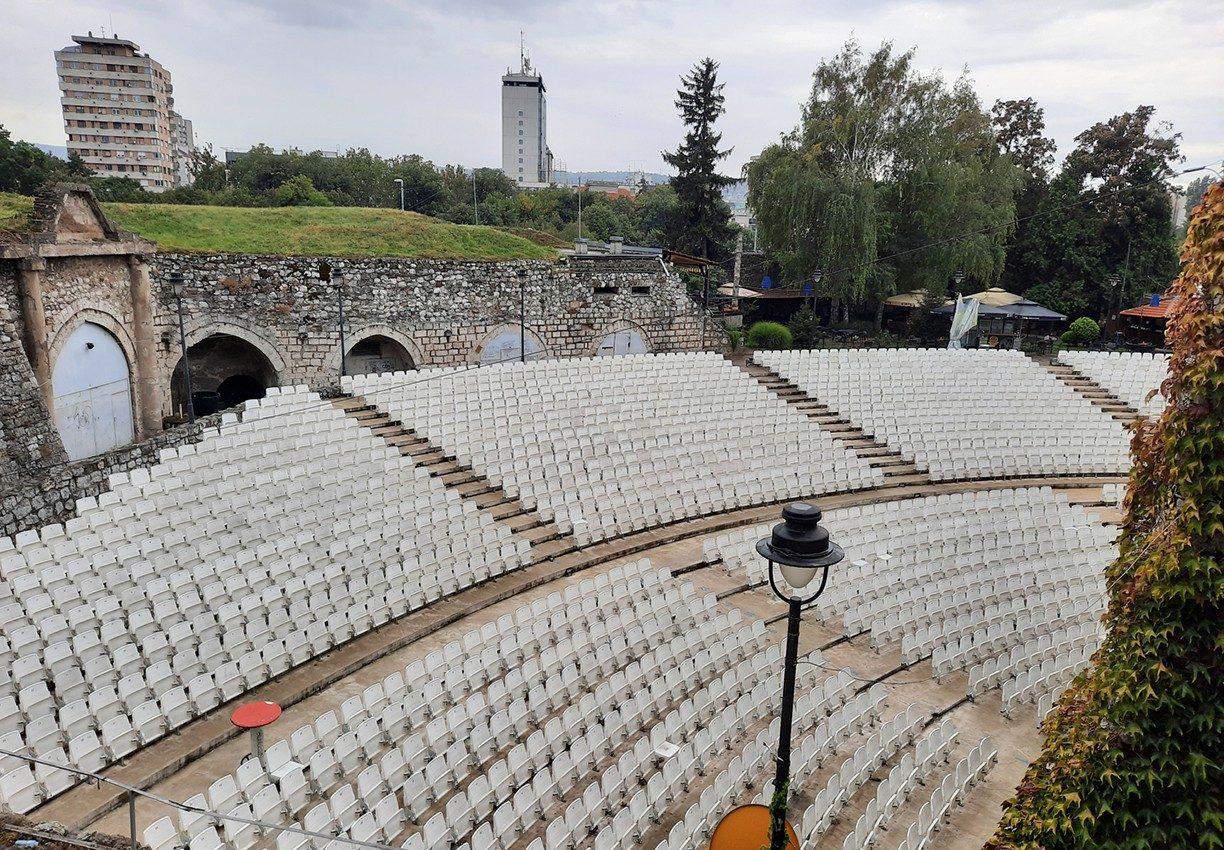
photography by: Omri Westmark
The fort’s perimeter wall is accompanied by an esplanade that offers some spectacular views of downtown Niš and the Nišava River.
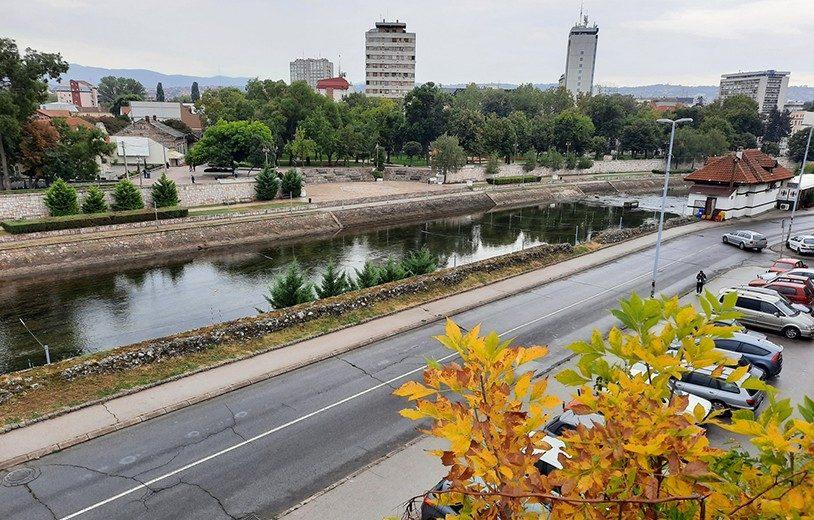
photography by: Omri Westmark
We might associate this ancient complex solely with antiquities, but as a matter of fact, it also contains some more recent ruins, like this dilapidated graffitied wall, sharply contrasted by its age-old counterparts.
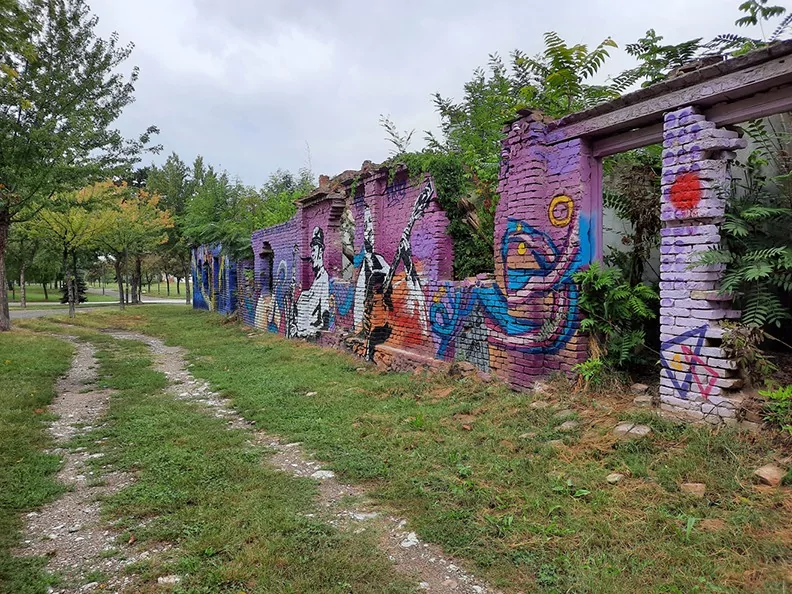
photography by: Omri Westmark
Considered as one of the oldest monuments in the whole of Serbia, the Lapidarium is a collection of ancient tombstones from different eras and locations across the country. This cluster of slabs used to be where the aforementioned Prince Milan’s monument sits today, relocating to its current position in 1980.
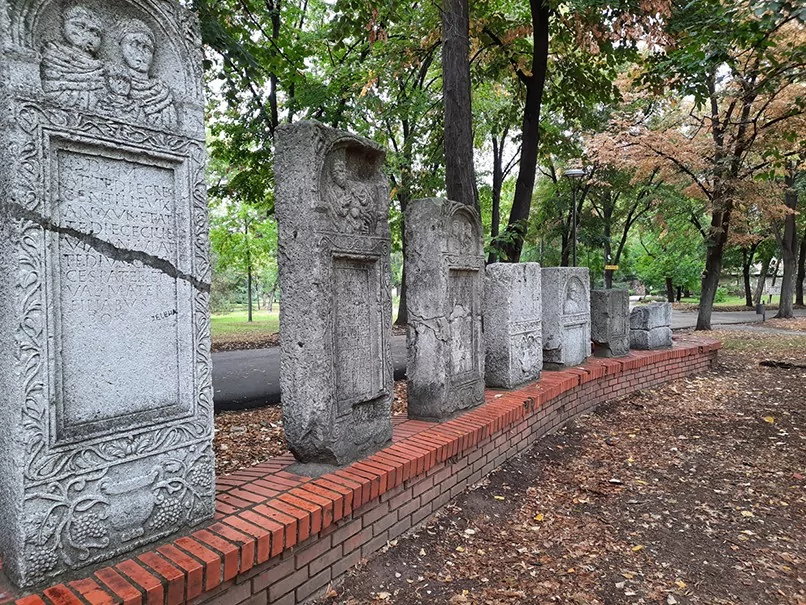
photography by: Omri Westmark
Among the tombstones are also sarcophagi and altars, and while most of which were discovered in the premises of the fortress, some were brought from the numerous archeological sites around Niš.
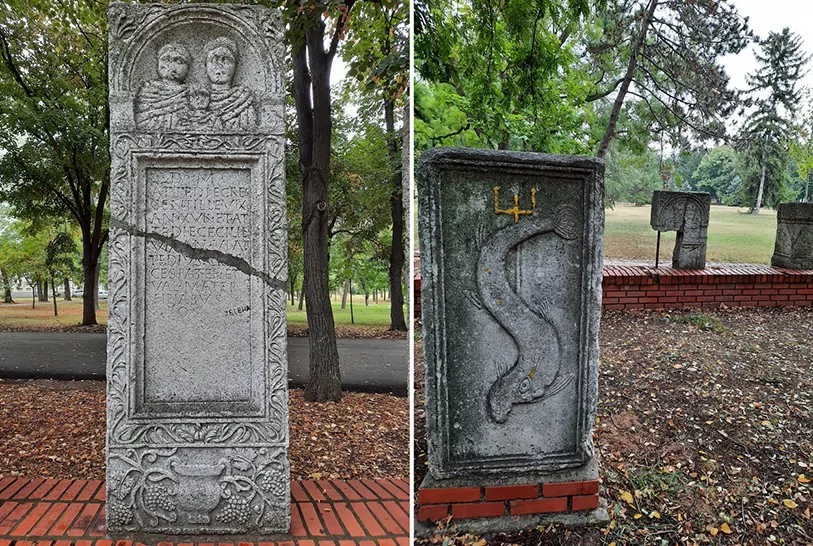
photography by: Omri Westmark
Between 1984-1985, excavations at the site revealed an ancient Roman street, a vestige of the fort’s former rulers, who as their Ottoman predecessors used it as a fortified stronghold that played a crucial role throughout the region.

photography by: Omri Westmark
The beautifully preserved 16th century Bali Bey Mosque is a prime example of Ottoman religious architecture, particularly due to its various masonry styles, all of which are blended into one façade. Following its restoration, the mosque was repurposed as an art gallery for local artists, and even though most of its interior part was whitewashed, a small of portion of the original stonewall was left undyed.
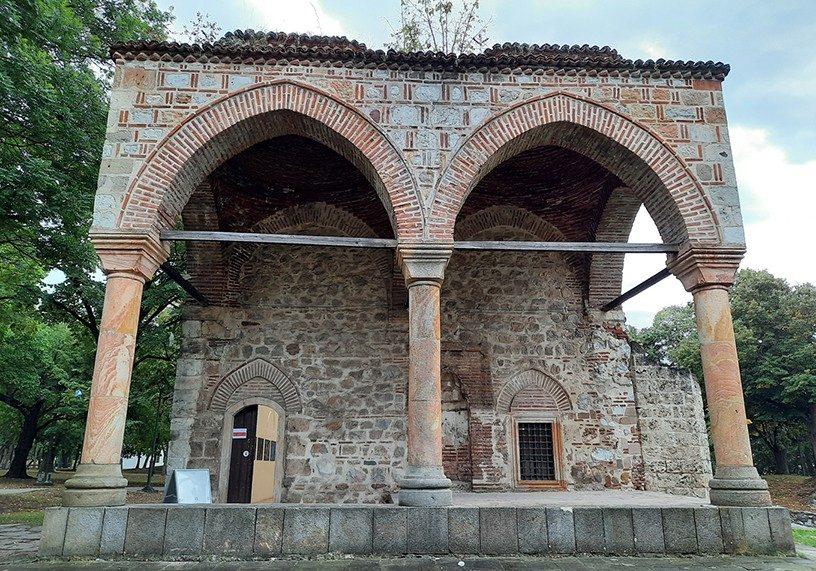
photography by: Omri Westmark
Looming at the southwestern edge of the fortress is Niš Green Market, which is also the next place on our list.
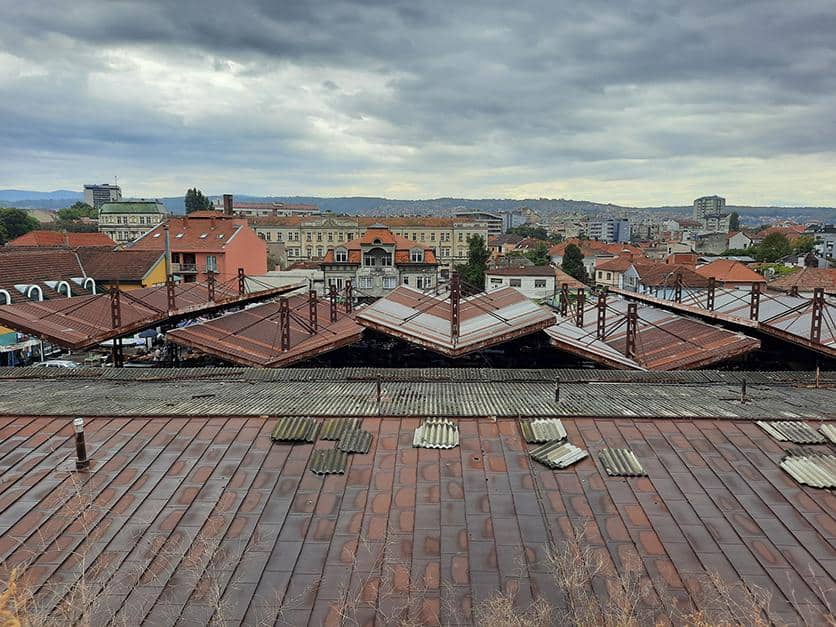
photography by: Omri Westmark
Tucked away between Niš Fortress and the city’s hectic bus station, the Green Market, or Cvetna Pijaca as it known locally, is a bustling shopping complex that practically has anything, from fresh produce to cheap imported ware. Like many green markets across Serbia, Cvetna Pijaca is frequented by people from all echelons of society regardless of their income. Evidently, a suited businessman can shop alongside a homeless person, ultimately making the market a far more interesting place to visit if you wish for a respite from the jillions of history-oriented sites.
Several egg stands facing the household products section, both of which are shaded by the modest, yet iconic zig zag shaped corrugated tin roof.
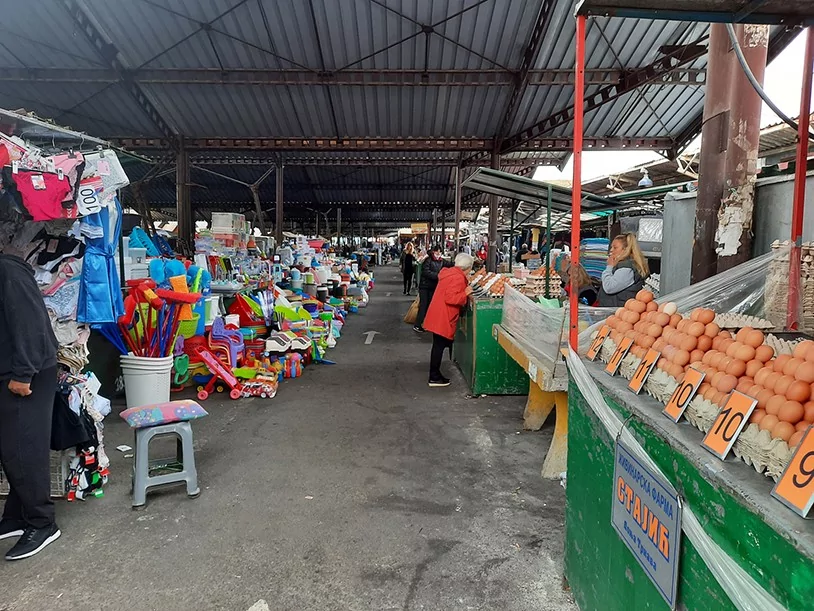
photography by: Omri Westmark
One of Cvetna Pijaca’s egg booths, offering an assortment of eggs, divided by their size. Unlike generic supermarket where one just purchases a box with fixed number of eggs, shoppers can freely choose their desired amount.
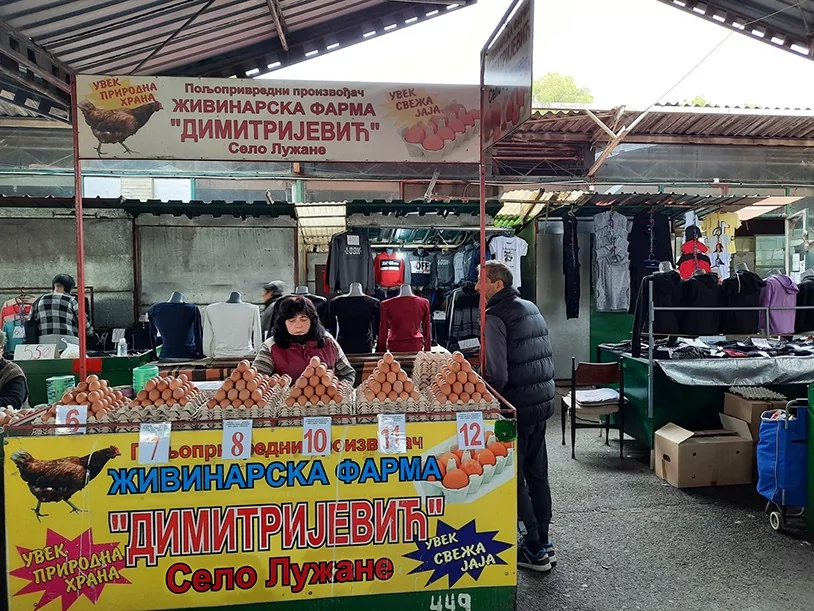
photography by: Omri Westmark
Most, if not all of the market’s stands are operated by farmers who sell their freshly harvested produce directly from the farm, and while it means that not all vegetables and fruits are as photogenic as in modern-day supermarkets, they are surely rich in flavors and aromas as well as being organic, just without a formal label.

photography by: Omri Westmark
The city of Niš is surrounded by insanely fertile lands, most famous for the cultivation of peppers that are used for all hosts of scrumptious national dishes, most notably Ajvar, a red pepper paste mixed with herbs. It’s only natural that this red treat dominates large parts of the Green Market.

photography by: Omri Westmark
Among the dozens of villages specializing in growing peppers is Donja Lokošnica which every autumn turns red, when virtually all of its residents hang bundles of peppers from their houses, letting them dry under the Balkan sun.
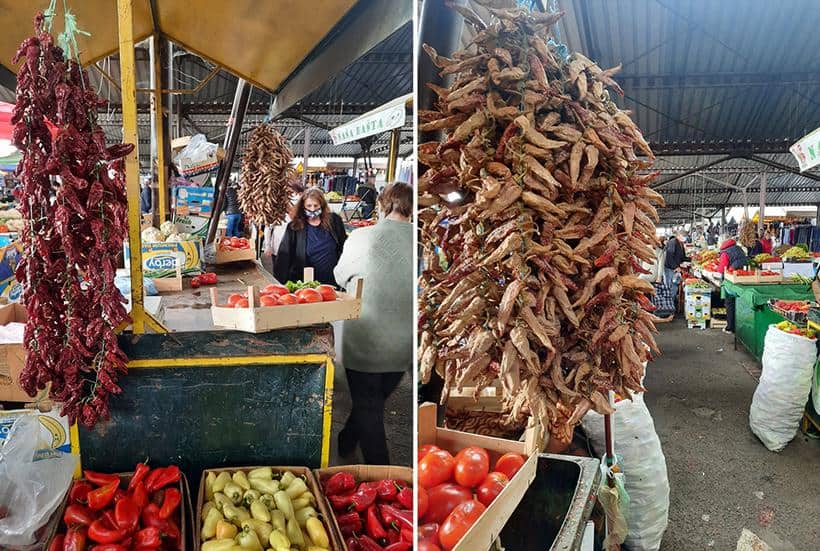
photography by: Omri Westmark
Serbia is generally an inexpensive country for foreign travelers, but even by local standards the market has exceedingly cheap prices and thus, curious foodies who wish to complement their visual enjoyment with tasting the mouthwatering fruits and vegetables will find it easy and affordable.

photography by: Omri Westmark
Some vendors divide the same kind of vegetable or fruit into separate boxes, priced differently according to their size and quality.
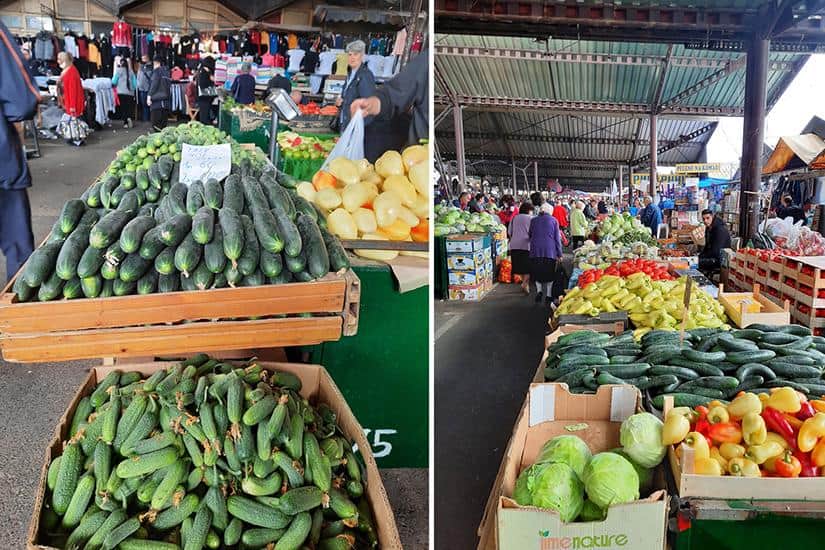
photography by: Omri Westmark
Situated just next to the main hall where agricultural produce is sold, the clothing section is not as equally impressive as its veggie counterpart. Offering mostly cheap and uninspiring garments, don’t expect to find here Serbian folk costume, nevertheless, it still worth a short visit.
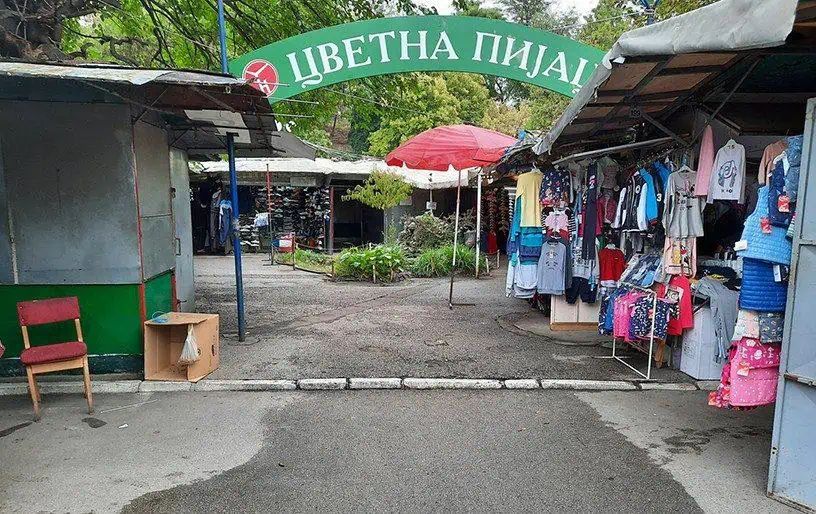
photography by: Omri Westmark
Outside the Green Market, lined along Đuke Dinić Street, are dozens of traditional eateries offering different types of grilled meat, often served in a flatbread and garnished with white sauce and pickles.
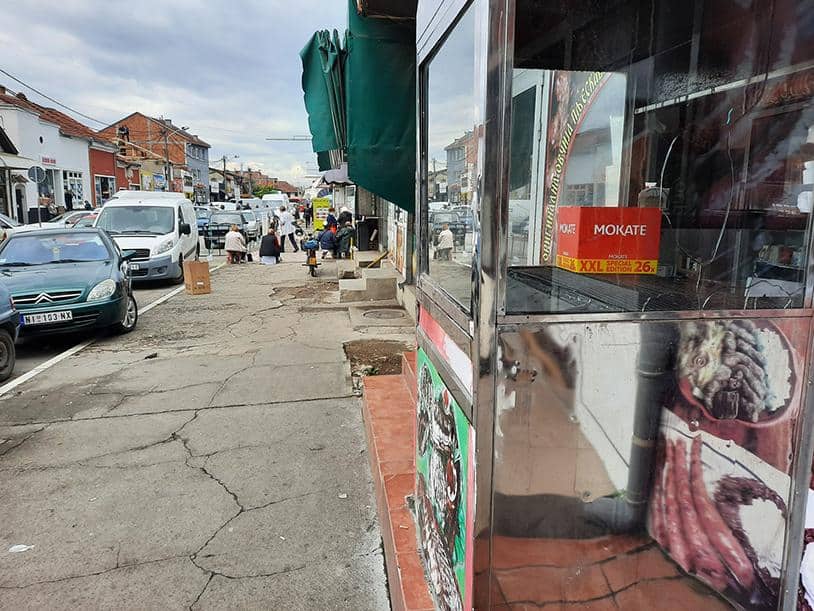
photography by: Omri Westmark
Defining the rear boundary of the market, the formidable walls of Niš Fortress loom in between buildings every couple of meters, creating a fascinating mosaic of old and new, as well as lofty and mundane elements that coexist in the urban fabric.
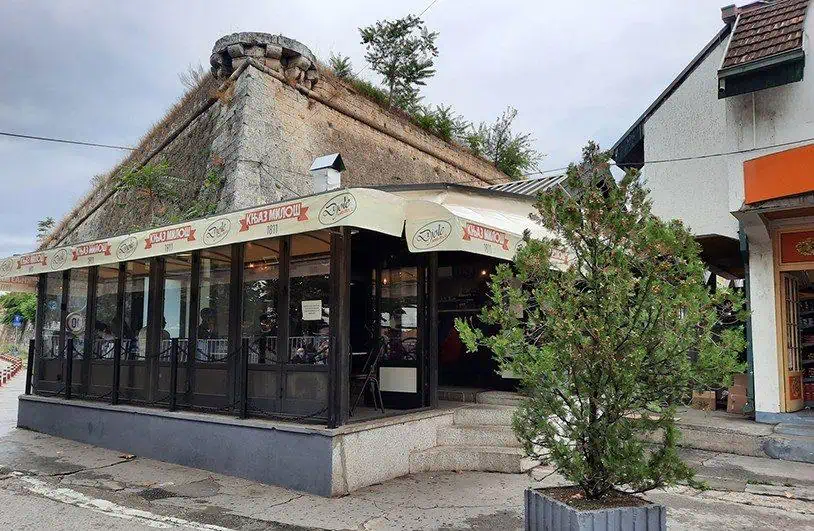
photography by: Omri Westmark
The city of Niš is packed with numerous vestiges of its former Ottoman rulers, yet none of them is as iconic (and horrific) as the Skull Tower, known locally as Ćele Kula.
In the midst of the first Serbian uprising against the Ottoman rule at the beginning of the 19th century, a group of Serbian rebels was vastly outnumbered by the gargantuan Turkish army in Čegar Hill, around Niš. In a desperate move, fueled by the unwillingness to be brutally tortured if captured, the leader of the Serbian fighters, Stevan Sinđelić, ordered the detonation of their stock of gunpowder barrels, triggering a massive explosion that killed anyone at the vicinity, Serbs and Turks alike.
Following the Battle of Čegar, the province governor decided that the rebels’ heads will be sent to the Ottoman sultan, Mahmud II, as a testament of their defeat. After being inspected by the sultan, the skulls were then returned to Niš, where they were incorporated as building blocks of a 4.5-meter-tall tower, serving as a gruesome deterrence against any future revolt.
This dreadful structure didn’t achieve its goal as the Ottomans were ultimately driven out of Serbia a decade and a half later. The partly dismantled tower originally contained 952 skulls, arranged in 14 rows, each consisting of 17 ones, while nowadays, only around 60 skulls are still embedded into the limestone edifice.
In the 1890’s, a chapel was built around this exceptional monument to both preserve it and honor the victims who paid the ultimate price for the whole nation. The chapel is part of a verdant complex, including a garden and a small booth that collects admission fee from visitors.

photography by: Maxim Bonte
Most of the skulls that once ornated the tower are now gone, either stolen, buried by family relatives or disappeared after Midhat Pasha, the last Ottoman ruler of Niš, ordered the dismantling of the structure as a measure of appeasement. The ones that do remain are protected by a set of glass panels.
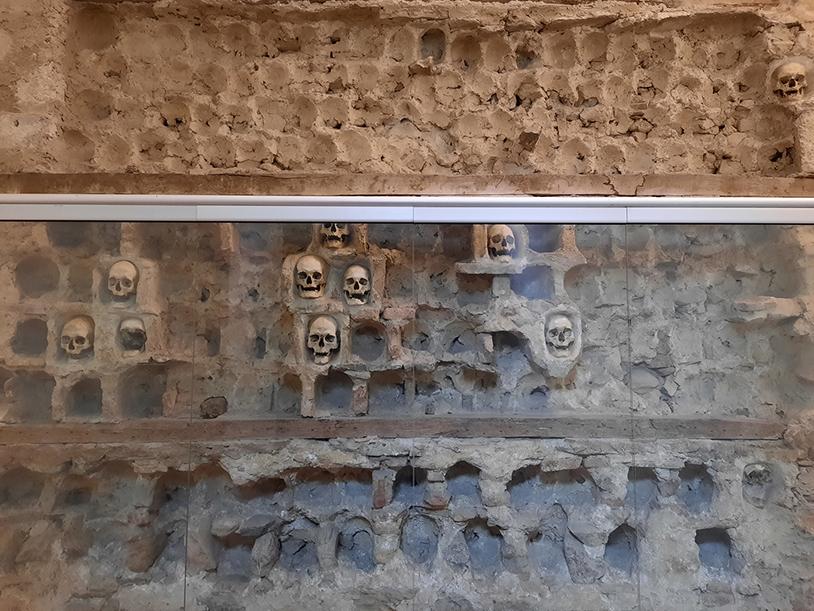
photography by: Omri Westmark
In some skulls, clear slash marks, resulting from the brutal mutilation by Ottoman forces, provide a silent testimony to the horrors of the infamous battle.
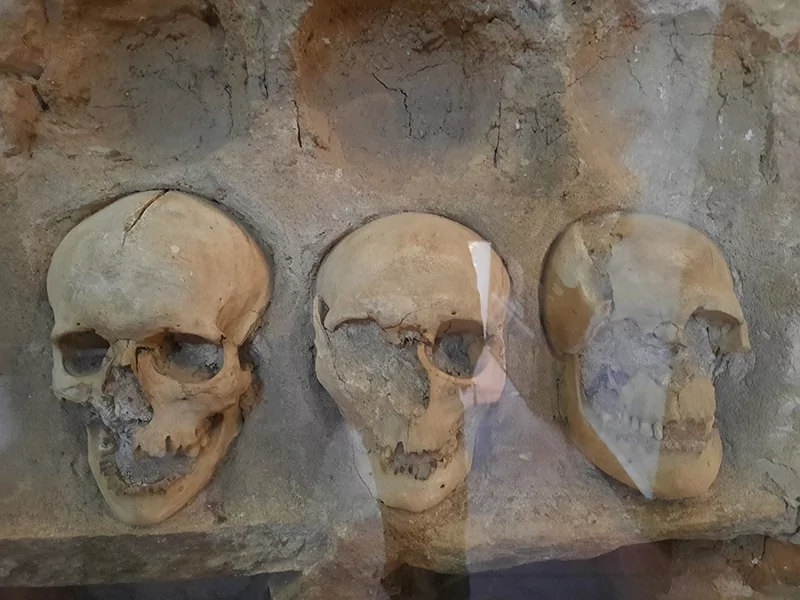
photography by: Omri Westmark
The monument and its surrounding complex are protected both on the municipal and national levels, and while this unique piece of history is not well-known around the world, Serbs regard it as an integral part of their national identity.
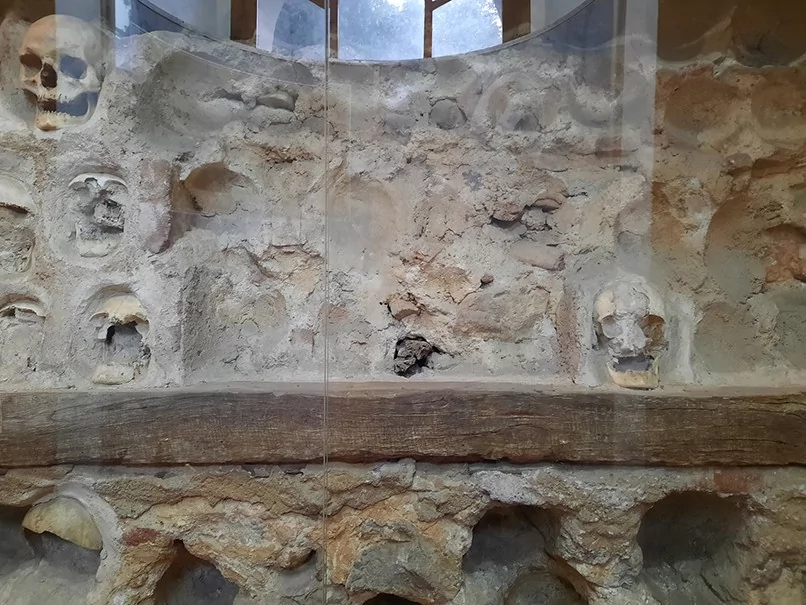
photography by: Omri Westmark
Interestingly, one skull stands out among all others. Encased in a separate glass chamber, the skull supposedly belongs to Stevan Sinđelić, the glorious leader of the Serbian rebel group, albeit this claim was never actually confirmed.
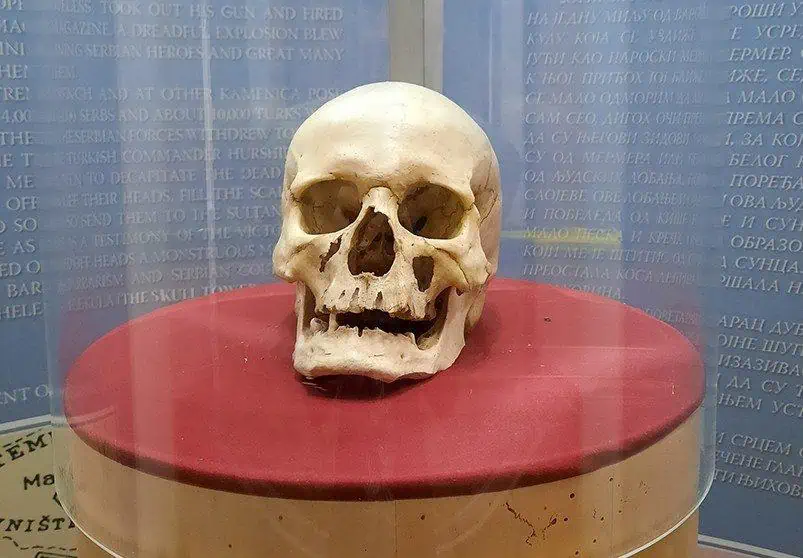
photography by: Omri Westmark
Serbia is home to scores of memorial parks, commemorating the partisans who fought in World War II, one of which, Bubanj Memorial Park is located on the outskirts of Niš.
Following the Nazi invasion to Serbia in 1941, the Germans erected the “Red Cross” concentration camp, where dissidents and “unwanted” people like Jews and Roma were detained. One year after its inception, more than 100 detainees conducted a successful escape. The breakout triggered a bloody retaliation by the Nazis, who executed more than 10,000 prisoners, although some sources put the total number at far higher figures.
The carnage took place at a hilly and forested area outside of Niš, deliberately chosen to conceal the horrifying massacre. Twenty years later, a memorial park was constructed to honor all of those who lost their lives during the mass executions.
Located roughly 3 kilometers from the center of Niš, Bubanj Memorial Park is nestled right next to the highway bound for the capital of North Macedonia, Skopje.

photography by: Omri Westmark
Constructed in 1961, the memorial consists of several sculptures, three clenched fist shaped concrete figures and a large marble relief slab, made of five panels, each depicting a different stage of the massacre and its aftermath.
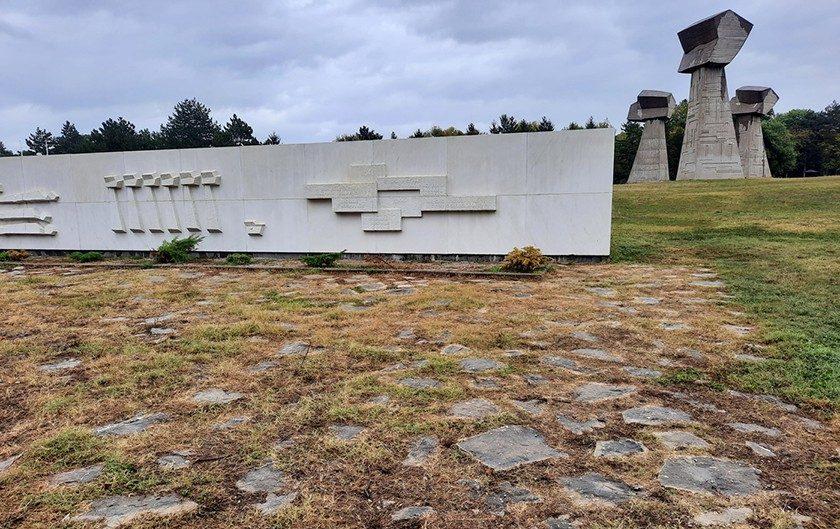
photography by: Omri Westmark
By far the most iconic part of the park, the 3 concrete clutched hands are differentiated by their size, accounting for the children, women and men who were killed at the gruesome events.
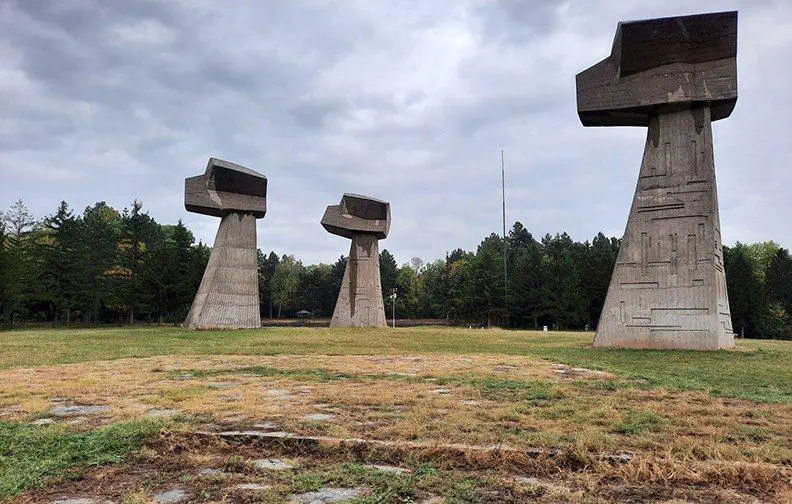
photography by: Omri Westmark
Furthermore, the shape of the clenched fist also represents the resistance and defiance of the prisoners at the moment of the executions, and also honors the partisans who were engaged in a guerilla war against the Nazis.
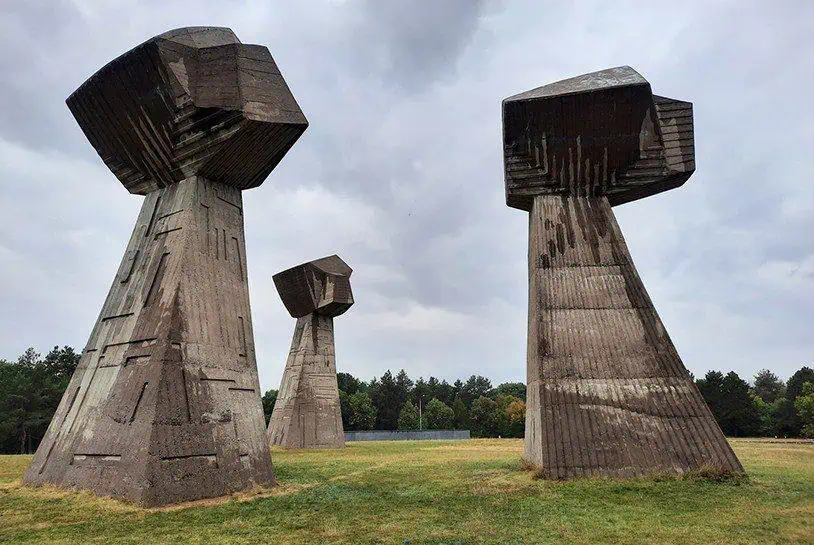
photography by: Omri Westmark
In the years before its construction, three separate contests took place to determine how the memorial park will be designed. The committee ultimately commissioned a Croat sculptor named Ivan Sabolić to create three options, of which, Bubanj Memorial Park’s current design was chosen.
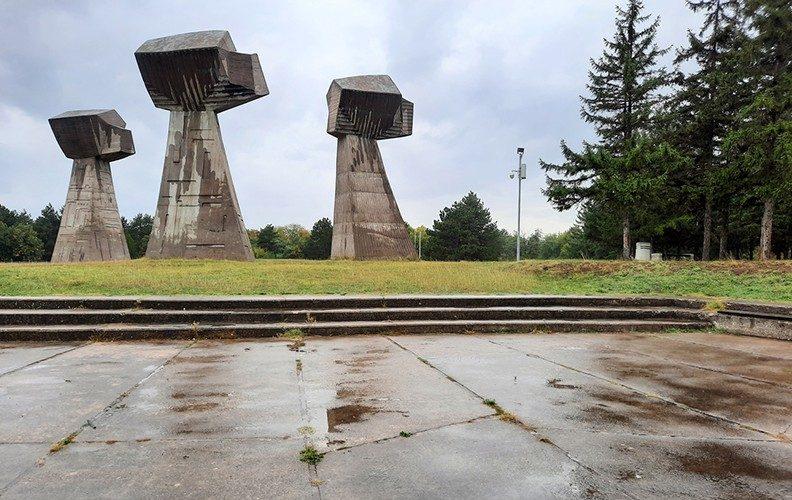
photography by: Omri Westmark